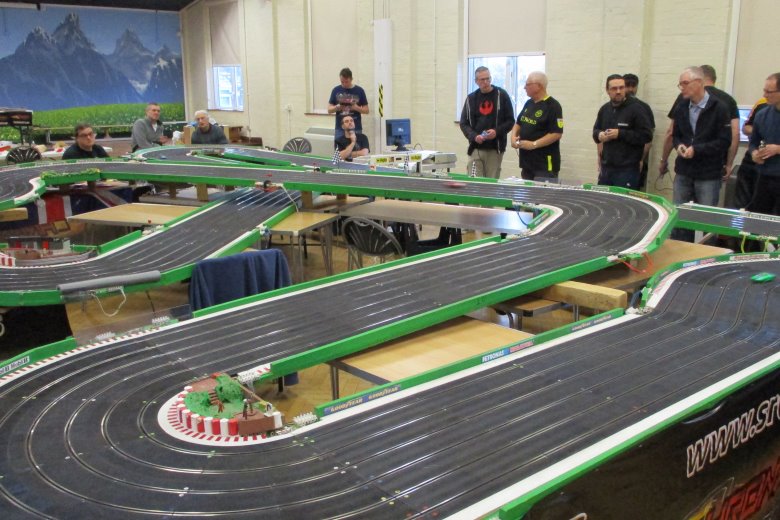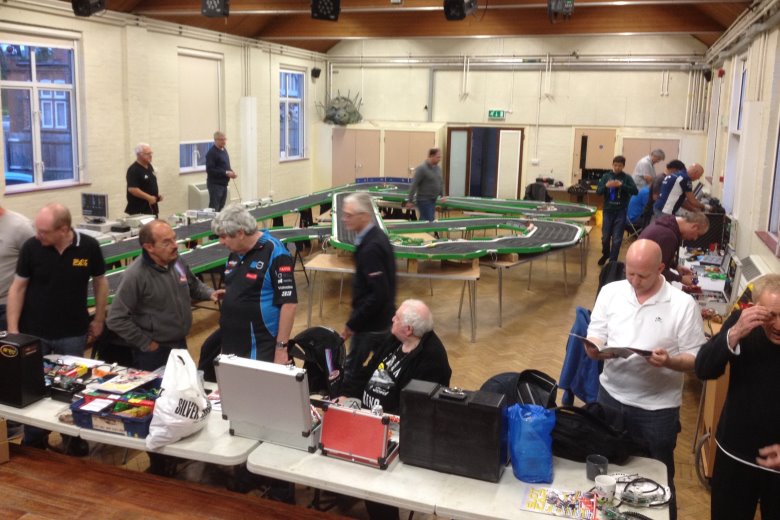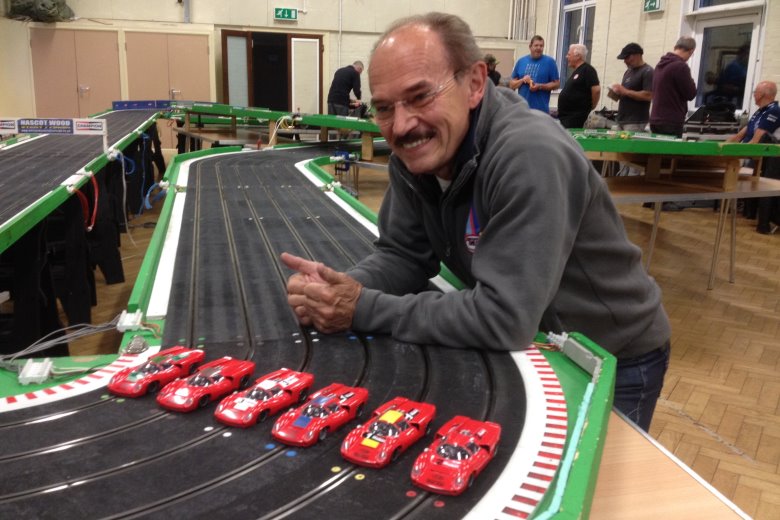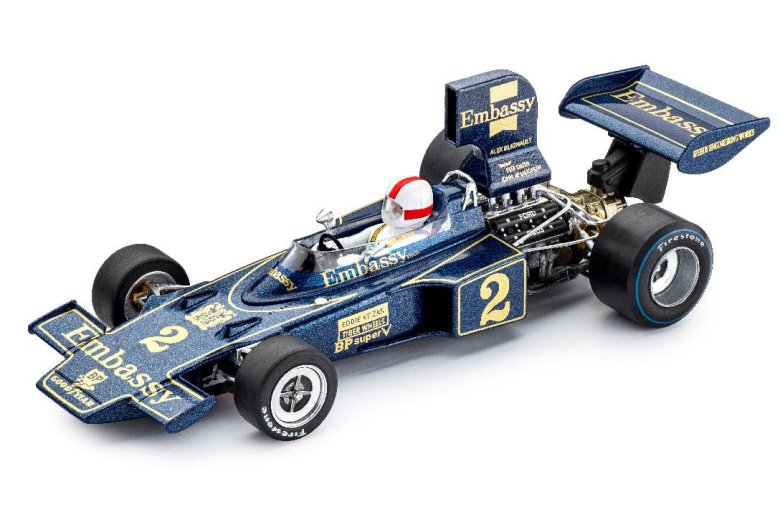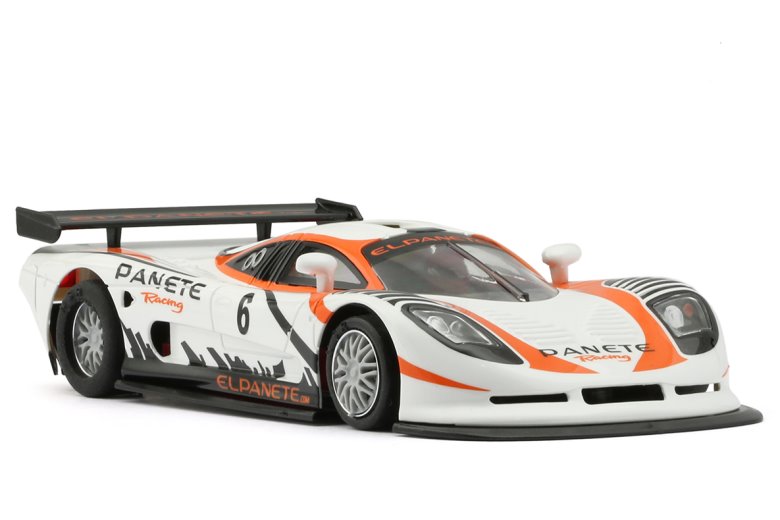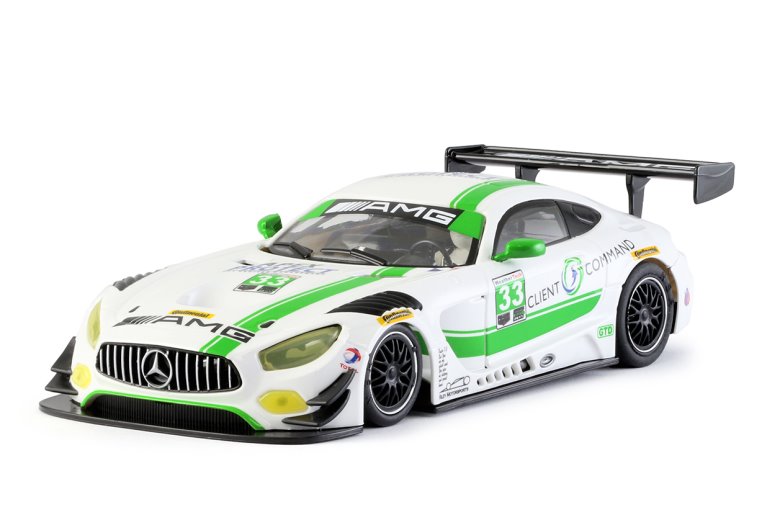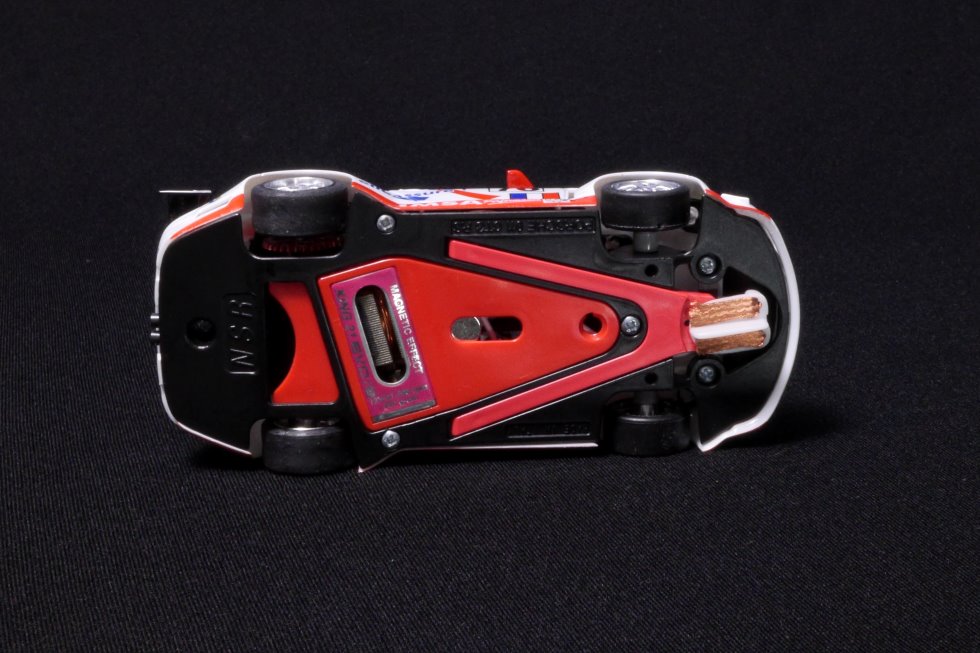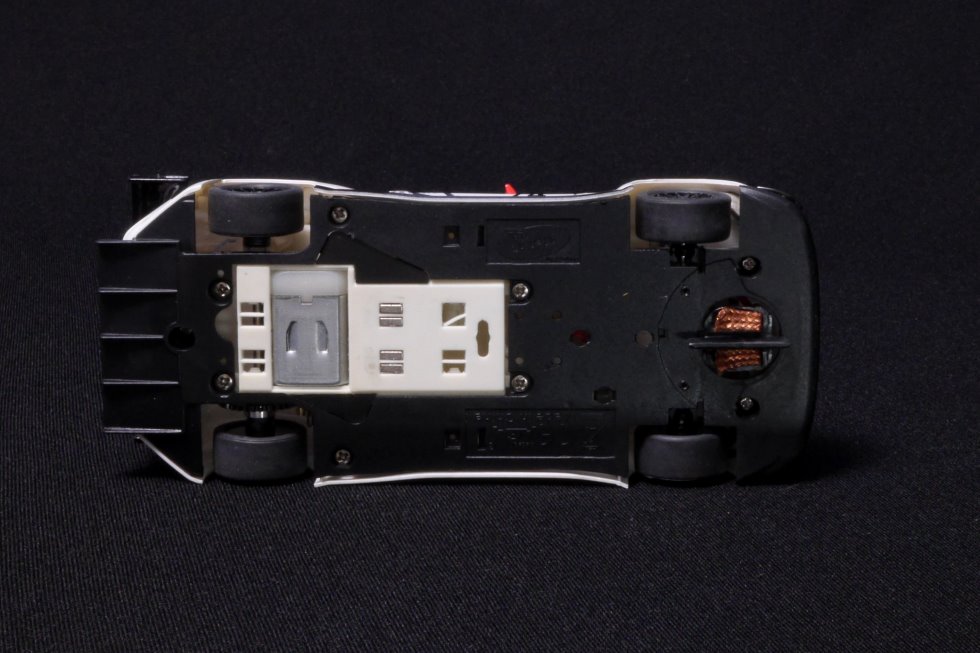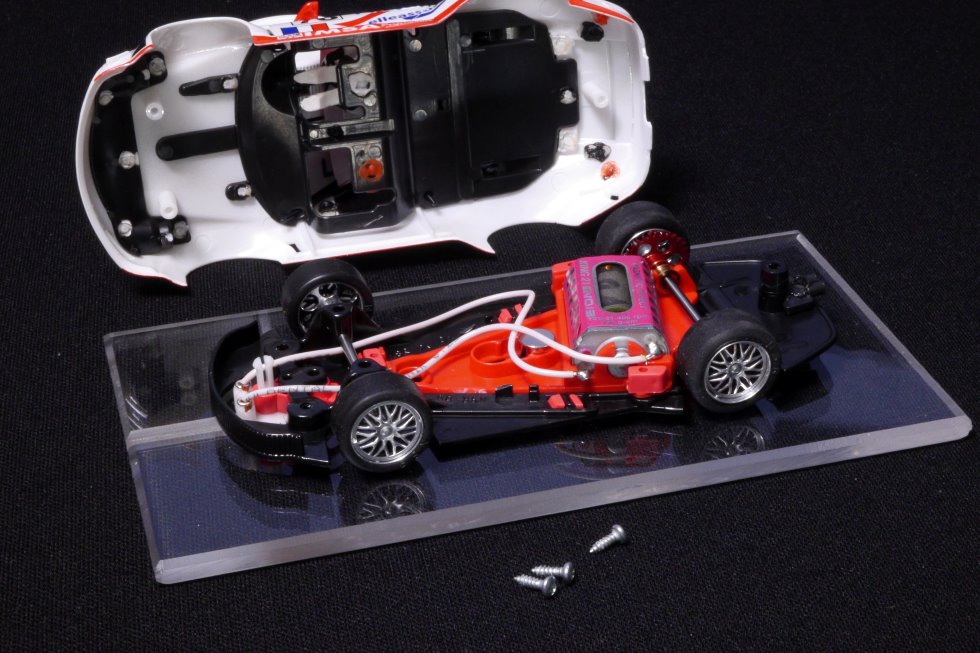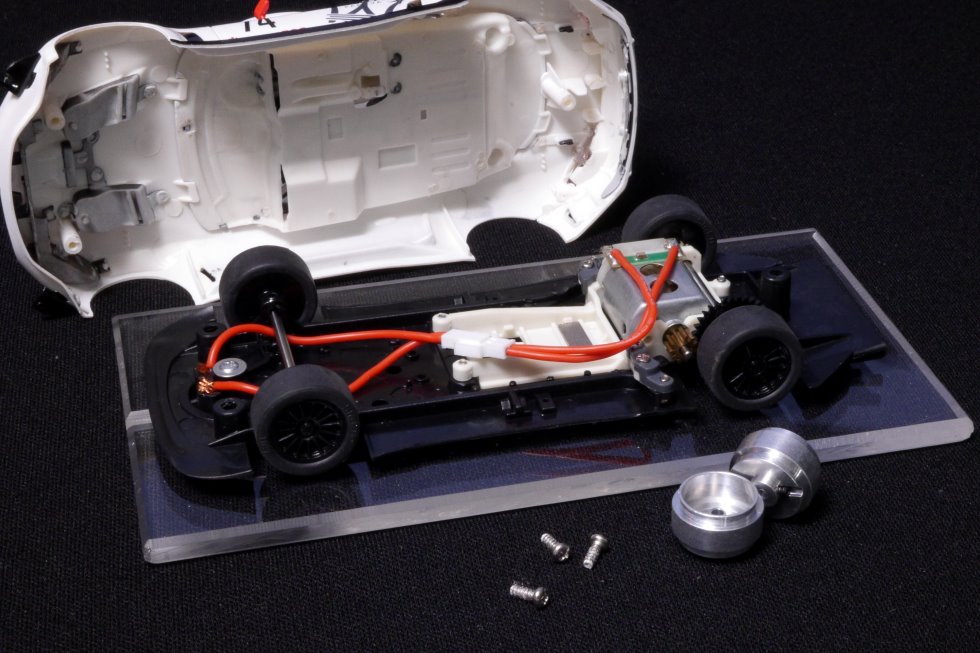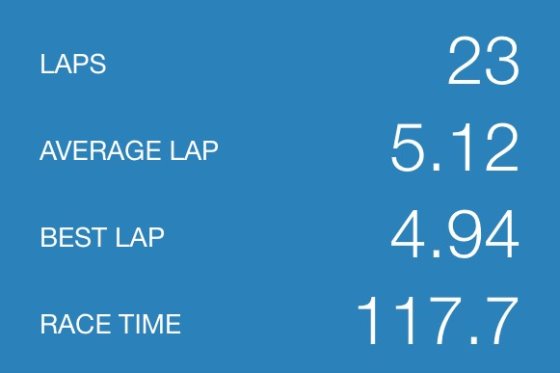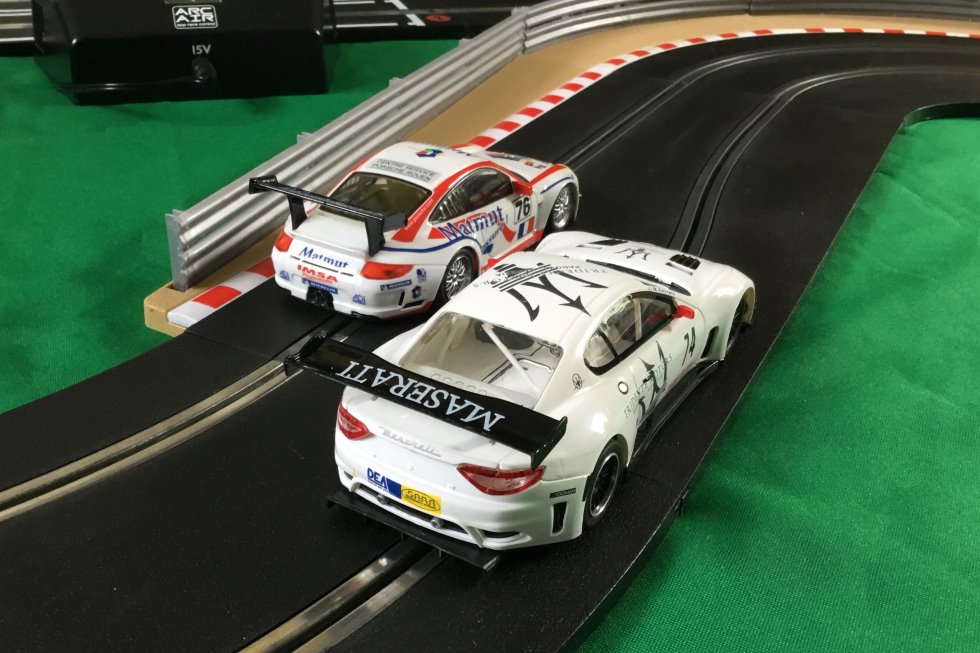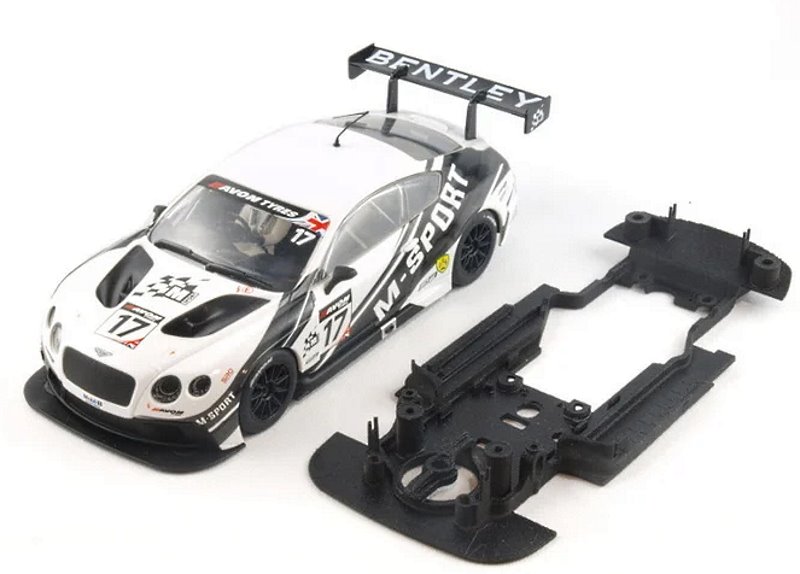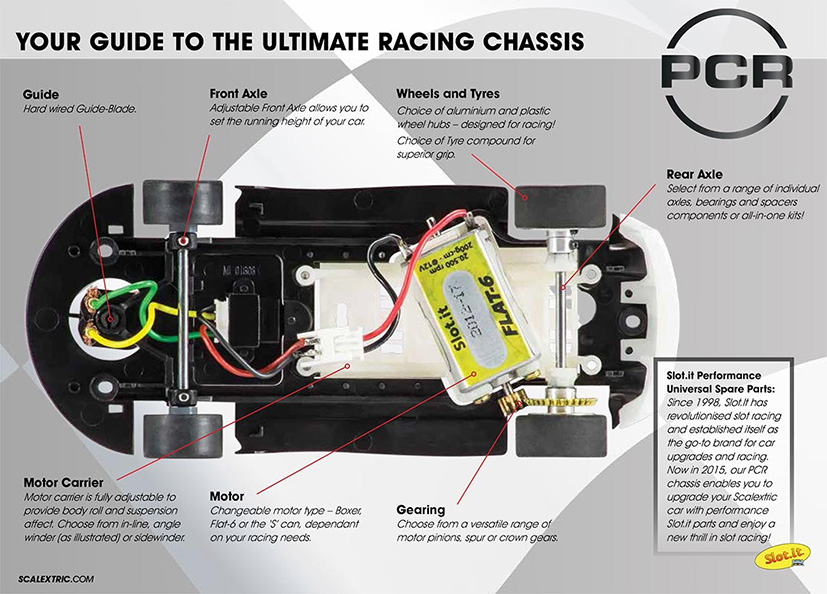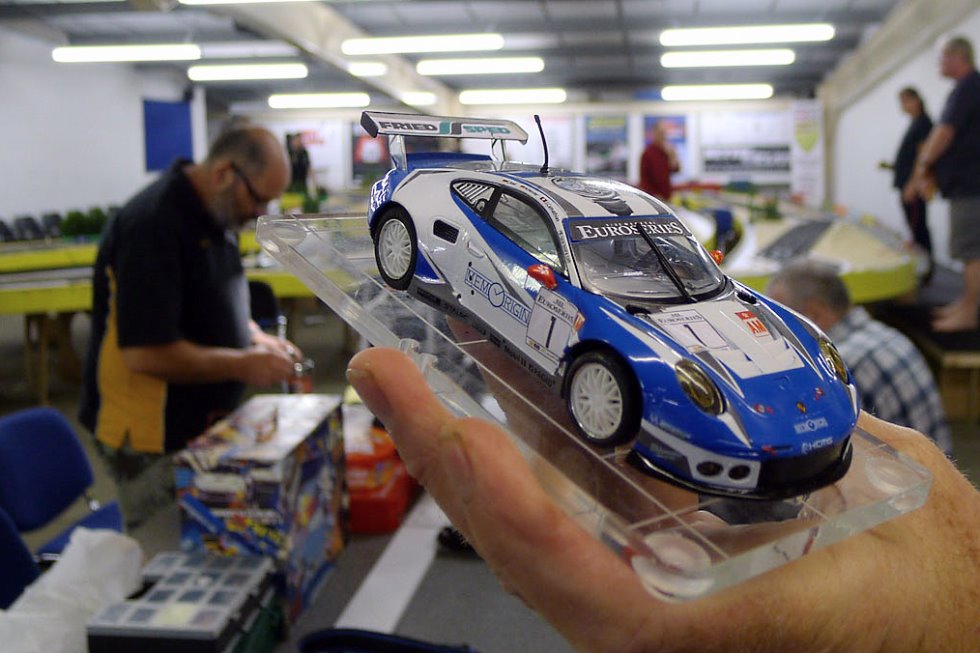In the final part of our performance slot cars series, we go club racing…
So far, this series has looked at NSR, Policar and Slot.it as high-performance home racing alternatives to Scalextric. After a brief introduction, I’ve taken a car from each brand to explore how they differ from standard Scalextric models. You can read the previous posts in this series here: blog.jadlamracingmodels.com/tag/performance-slot-cars/
The origins of NSR, Policar and Slot.it were all in club racing – so that’s probably the ideal place to end up. I have looked at preparing Scalextric cars for my digital racing club in Part 10 of my tuning series, but the performance brands are a far more familiar sight at slot car clubs around the world.
In this post, we’ll visit a typical UK slot car club, consider some car options and finish with a look at performance GT3 models – including a surprise guest appearance by Scalextric. If you want to find your nearest club, this interactive map is a good place to start.
Don’t forget, Jadlams stock a wide range of NSR, Policar and Slot.it cars, spares and accessories: www.jadlamracingmodels.com/scalextric-slot
The Slot Car Club
All slot car clubs are different – even if they run similar classes of cars. There are clubs that attract twenty or thirty racers to a club night, others that are happier with five or six. Some clubs run on plastic track (Ninco and Scalextric seem the most popular in the UK), although many have wooden routed layouts of four, six or even eight lanes. And those tracks might be built temporarily in a public venue, or be permanent layouts in dedicated club premises. Whatever the set-up, the heart and soul of any club are the people.
Apart from a Slot.it Group C class, my club doesn’t run performance brands. However, I do visit a few other clubs – and one I particularly like is Nascot Wood in Watford, just north of London. They are an ideal club to look at here – fairly typical UK classes, a nice big Ninco track in a hired school hall, plus a large, friendly and helpful membership.
Finding helpful club mates is the secret to getting started in club racing. It’s always good to show up to your first race having done plenty of research and maybe with a suitable car to race… but it saves time – and a lot of money – to ask club members for advice about the best cars to buy, ideal tyres to use and what can and can’t be modified. It’s also sensible to ask to look at – and ideally borrow – other people’s controllers before you decide on the right one for you. Don’t forget to thank your new club mates for their help and generosity – and when it’s your turn to welcome a ‘newbie’, pass it on…
The Racing Classes
Nascot Wood meet every Friday evening and their racing calendar is divided up into six different classes, plus some ‘club car’ nights when the club provides the cars – one per lane. All the classes at Nascot Wood are non-magnet and most use standard cars that you can buy at Jadlams. The idea of the classes is that similar cars race against each other – both in terms of the looks and the performance.
The first class is ‘Formula One’ – which is exclusively for the Policar classic F1 models that I looked at in Part 3 of this series. The Lotus 72 was prepared to race at Nascot Wood, fitted with the optional aluminium rear wheels. Otherwise, the cars must be almost standard – it will be racers’ tuning and driving skills that make the difference. My recommended car for F1 is: www.jadlamracingmodels.com/policar-lotus-72d-no-2-south-africa-championship-1975-1-32-car02f/
Another one-make ‘stock’ class is the ‘Touring Cars’. This is for the Slot.it classic touring cars – Alfa Romeo 155, Opel Calibra V6, Mercedes 190E and Nissan Skyline GT-R. The only parts that can be changed are the tyres, braids, body screws and wires. Mechanically, these cars are very similar to the Group C Porsche I looked at in Part 4. If you can grab a Calibra, get one – but my recommended car from those in stock is: www.jadlamracingmodels.com/slot-it-mercedes-190e-dtm-no-6-1st-wunstorf-1992-1-32-ca44c/
The Group C cars themselves fall into the ‘Classic Sports & GT’ class. Racers are able to modify their cars a little more, mostly because there is such a vast range of models available from six different manufacturers – including Slot.it, Policar and NSR, of course. The NSR Porsche 908/3 would be right at home in this class – as would the Slot.it Porsche 956. Only in-line and sidewinder motors are allowed. There’s a lot of choice, but my recommended car is this one: www.jadlamracingmodels.com/nsr-porsche-908-3-escuderia-montjuich-champion-montana-1973-1-32-0129sw/
The next class is the least regulated – and therefore fastest – of them all. Most clubs have an open class like this to allow the builders to tune and modify to their heart’s content. And these cars are thrilling to watch. Nascot Wood’s ‘Sports/GT’ class limits cars to a 25,000 rpm motor from an approved list – and all components must be made by recognised manufacturers such as NSR and Slot.it. The cars’ chassis must also be unmodified. An ideal entry-level car would be the NSR Mosler MT900R with an anglewinder motor. This will do nicely: www.jadlamracingmodels.com/nsr-mosler-mt900r-panete-racing-orange-6-evo5-aw-king-21-evo3-1-32-0137aw/
Then there are two more one-make classes… The first is for classic ‘Group 5’ cars manufactured in France by Racer Sideways. This is a brand I’d love to see available at Jadlams – there’s a lot of overlap with Slot.it models in terms of layout and parts. They are very nicely detailed too.
Which just leaves us with ‘NSR GT3’. I’ve left this until last as I’ll be looking more at performance GT cars in a moment. At Nascot Wood, GT3 cars can compete in ‘Sports/GT’, but they also have a specific GT3 class for NSR models – so an NSR GT car could do double-duty. The club uses rules very similar to those produced by NSR for national and international events – some choices of parts, but they must be made by NSR. The current top choice for NSR GT3 is either the Corvette C7R or the Mercedes AMG… I’d recommended this one: www.jadlamracingmodels.com/nsr-mercedes-amg-sebring-2017-no-33-aw-king-21k-evo3-1-32-0114aw/
The New GT3 Rivalry – Slot.it vs NSR
NSR are the established brand in GT3 slot car racing. However, Slot.it have recently joined the fray with their beautiful Maserati GranTurismo MC and forthcoming Nissan GT-R Nismo GT3 models. The range at NSR is much bigger – including the Porsche 997, BMW Z4, Corvette C6R and C7R, Audi R8 LMS, Aston Martin Vantage and Mercedes AMG GT3.
NSR produce their GT3 cars with a choice of anglewinder and sidewinder options, Slot.it’s GT3 configuration is limited to sidewinder only. Many UK GT series stipulate anglewinder motors must be used – and that’s considered the best option on these shores. However, racers and groups elsewhere claim the sidewinder S-Can motor gives a lighter car and smoother motor characteristics – therefore an easier car to drive. That is certainly an important consideration on smaller home-based tracks.
Having got my hands on a Slot.it Maserati, I thought I’d compare it to an NSR anglewinder car. My NSR Porsche 997 isn’t anywhere near the best of the range, but is a lovely model. To help clubs recover from the Covid pandemic, NSR have generously given ten Porsche kits to 100 slot car clubs around the world – so you might get to race an NSR Porsche club car if you visit one of the lucky clubs.
You can buy your own NSR Porsche 977 here: www.jadlamracingmodels.com/nsr-porsche-997-nurburgring-24hr-2014-no-57-aw-king-21-evo3-1-32-0110aw/ – and the Slot.it Maserati is available in two liveries: www.jadlamracingmodels.com/slot-it-maserati-mc-gt3-salita-del-corso-2017-1-32-ca43a/ and www.jadlamracingmodels.com/slot-it-maserati-mc-gt3-no-38-1st-vallelunga-2012-1-32-ca43b/
The first thing to notice is the different motors and configurations – the anglewinder long-can in the NSR (left) and sidewinder S-Can in the Slot.it (right). Of course, the pod system makes it straightforward to change either car to any of anglewinder, sidewinder or in-line (S-Can or long-can) drive trains. Both pods are designed to work with the large 17mm diameter GT wheels. The triangular NSR GT pod is different to the rectangular one we saw in the ‘Classic’ range Porsche 908/3. The white Slot.it pod is a 1.0mm offset pod – this will fit in any Slot.it car, but is designed for the bigger wheels.
One feature to point out is the red ‘V’ shape holding the guide on the NSR Porsche. That’s called a ‘drop arm’ and should – in theory – keep the guide in the slot on a bumpy track or under hard acceleration. Most racers use the supplied screw to limit or prevent movement of the drop arm – and the recent NSR Mercedes AMG has reverted to a ‘normal’ arrangement with no drop arm and the guide fitted to the chassis.
The Maserati is the first GT3 model Slot.it have released. They’ve chosen the sidewinder layout because they believe it is better for both home tracks and club racing. The car is slightly different from other Slot.it cars as it is equipped with a superior screw-in racing guide, plus a choice of plastic or aluminium rear wheels. The plastic hubs look good on show, but the metal wheels are the choice for racing. The wheel inserts transfer quite easily – just push them from behind with a cocktail stick. The Slot.it GT3 is ready to be converted to digital – either Scalextric, Carrera or oXigen – but the NSR cars are more of a challenge.
Inside, the layouts are similar to the NSR and Slot.it cars we’ve already looked at. The NSR GT car is supplied with four grub screws necessary to set the front axle height. On the Slot.it Maserati, these are already fitted – another welcome change. Grub screws are important as they fix the wheels, gear, braids and axle height. You’ll need different hex wrenches if you have both cars in your fleet. Slot.it grub screws are M2 or 0.9mm, the larger NSR grubs screws are either M2.5, 1.3mm or 0.005”. For M2 you have the choice of the NSR4411 wrench here or the Slot.it PA76 here. For the M2.5 grub screws, there’s the NSR4412 wrench here or the Slot.it PA67B here. A hex wrench will get a lot of use with the anglewinder set-up. Adjusting the side-to-side movement is essential to ensure good gear mesh. Such fine-tuning is all part of the fun!
So how do these performance GT cars fare on our SL6 test track? A head-to-head with the Slot.it Maserati and NSR Porsche was a lot of fun. The magnets are very different in the cars – the NSR is very much stronger. Anyway, I timed a 2-minute run for each car to include on the SL6 Test Track Leaderboard. The Porsche was top magnet car with 32 laps and a best of 3:30 seconds – the Maserati managing 28 laps and a best of 3:90 seconds with its weaker magnet. The Porsche was hugely stuck down – the Maserati felt more like a non-mag car.
However, the non-magnet running was what I was interested in. I fitted a Slot.it SP23 tungsten weight in the Maserati and a 2.5g piece of tungsten putty in the Porsche – both placed in front of the motor. Even on the tight and twisty SL6 layout, the Slot.it Maserati was a dream to drive. Using a the pokey ‘linear’ Profile C throttle curve, I banged in 24 laps and a best of 4:52 seconds with the standard C1 tyres. Changing to NSR Supergrips to give a like-for-like comparison, the Maserati managed 25 laps and a best of 4:44 seconds. The NSR Porsche was trickier to drive with its high-torque motor – I needed the softer Profile A throttle curve – and over two-minutes I scored 23 laps and a best of 4.94 seconds – pretty good, but nowhere near the Maserati.
I was extremely impressed by the Slot.it GT car. Of course, this test was on a twisty home track – performance on a big club track will be different, but the Maserati should be good there too. The Maserati GranTurismo MC GT3 was a huge car in real life – remember Slot.it stake their reputation on accurate scale models, so they’ve chosen one that has ideal proportions to be a perfect slot racer. NSR take a few liberties with scale and stretch their cars so they are the ideal proportions for a perfect slot car… Two different approaches – but the goal is to give you a GT3 car that wins races.
Scalextric / Slot.it PCR
Another GT3 option for club racing – depending on the rules, of course – is a Scalextric body, 3D printed chassis and Slot.it performance parts. This concept began when Scalextric and Slot.it worked together on the Pro Chassis Ready (PCR) project in 2015. Slot.it-style chassis were produced for a small number of Scalextric models, including the BMW Z4 and Porsche 911 RSR GT3 cars. It was the best of both worlds – a high-detail Scalextric body and high-performance Slot.it chassis and parts.
The cost of creating a pro chassis model – a Scalextric car, PCR chassis, plus Slot.it components – was ridiculously expensive for the average Scalextric fan. However, it was an interesting option for car builders who already had the parts and fancied something different. At the time, a PCR hybrid was the only way to have a ‘Slot.it’ GT car. Although interesting, it wasn’t a commercial success – yet, on the track, PCR cars were competitive and beat cars from other brands. In the performance world, I guess that’s how success is measured – but it wasn’t something Scalextric would pursue.
Slot.it continued with the project and created print-on-demand chassis via their Slot.it 3D Print Shop at Shapeways. At the latest count, Slot.it have chassis for 15 Scalextric models – four modern BTCC cars, the Sierra & BMW M3, Audi Sport Quattro & Lancia S4 rally cars, plus the BMW, Porsche, Bentley, McLaren, Aston Martin, Audi and Mercedes GT3s. And there are other Shapeways designers – like Olifer and Amato – who now produce Slot.it-compatible chassis for other Scalextric cars. One of the benefits of on-demand 3D printing is that designs can be easily updated. Vac-formed interiors for some of these cars are also produced by Slot.it and available from Jadlams. To show what a Scalextric / Slot.it hybrid looks like, here’s a Scalextric Porsche built by my club mate Mike, which we raced at an oXigen digital endurance event at Rockingham Slot Car Club…
I hope this has been a useful introduction to club racing – and how the cars, parts and accessories sold at Jadlams can help you on your way. I’d recommend getting all the help and advice you can from your new club mates – they will know what works with their track and their classes, saving you time and money. But there is a place for some homework…
The Scalextric Tuning series – in conjunction with this Performance Slot Car series – should give you some useful background to the cars you might be racing and give you the basics for some tuning tweaks. Although the performance cars are more complex, the principles are the same. Equally, the NSR RTR tyres that worked best on the Scalextric Mustang are likely to be a good choice for any car on most club track surfaces – and require very little preparation.
Although Scalextric cars and home racing will be the focus of slot car posts here on the Jadlam blog, I hope to return to the performance brands – and club racing – from time to time.


